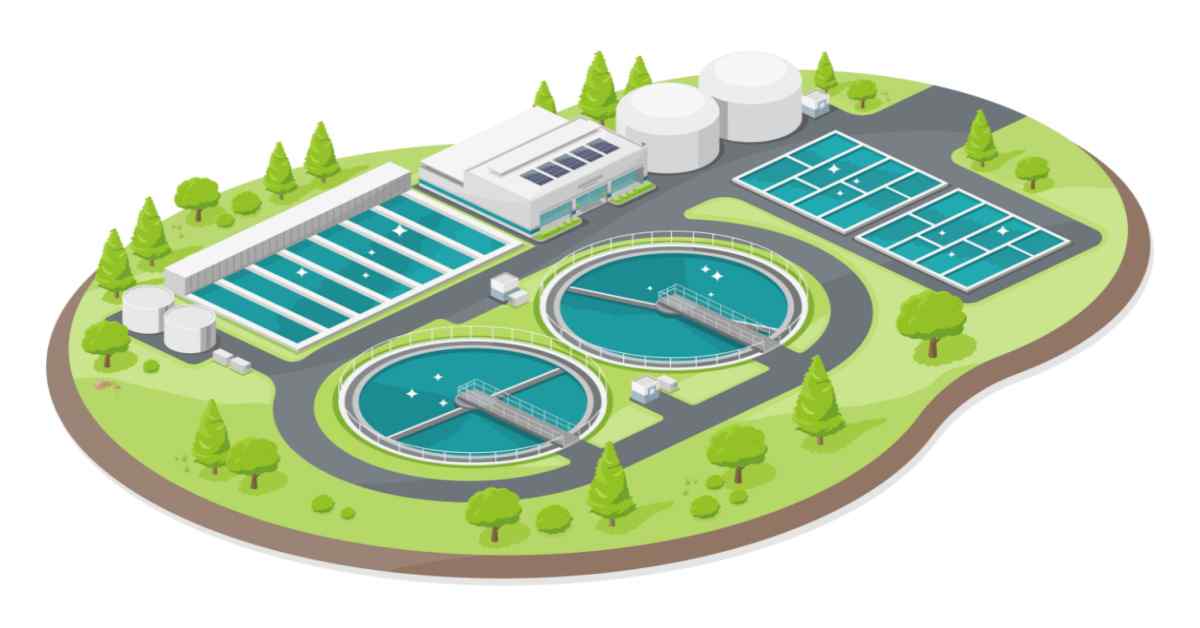Ensuring Safe Water through Effective Wastewater Solutions
Ensuring Safe Water through Effective Wastewater Solutions
Blog Article
Understanding Wastewater Treatment Processes and Their Ecological Effect
The ins and outs of wastewater therapy procedures play a crucial role in mitigating ecological obstacles associated with water air pollution. Each stage, from preliminary to sophisticated treatments, is developed to attend to specific contaminants, eventually protecting both public wellness and water communities.
Introduction of Wastewater Treatment
How is wastewater transformed into a risk-free source for the atmosphere? Wastewater treatment is an important procedure created to eliminate contaminants from used water, thus protecting public health and wellness and shielding ecosystems. This process starts with the collection of wastewater from domestic, commercial, and business sources, which is then directed to treatment facilities.
At these facilities, different physical, chemical, and biological methods are used to deal with the wastewater. Preliminary screening removes big debris, followed by sedimentation to separate much heavier solids. Subsequently, organic therapies, such as activated sludge processes, make use of microbes to damage down organic matter. These approaches not just minimize pollutant levels yet additionally promote the recovery of valuable nutrients.
The dealt with effluent can be safely released right into all-natural water bodies or recycled for irrigation and commercial functions, advertising source preservation. Furthermore, the treatment process generates biosolids, which can be repurposed as fertilizers or soil modifications, better enhancing sustainability.
Phases of Therapy Procedures
The wastewater treatment procedure usually consists of three primary phases: preliminary, primary, and second therapy. Each phase serves a distinct role in lowering the toxin load and making certain the effluent satisfies ecological criteria before discharge.

The key therapy phase concentrates on the physical splitting up of put on hold solids from the wastewater. Via sedimentation, heavier fragments clear up at the end of sedimentation storage tanks, creating sludge, while lighter materials, such as oils and oils, float to the surface and are skimmed. This process considerably reduces the natural and not natural load in the wastewater.
Secondary treatment is an organic procedure targeted at additional minimizing the concentration of natural matter. Different techniques, including turned on sludge systems and trickling filters, use microorganisms to metabolize natural toxins. This stage is necessary for achieving the required biochemical oxygen need (FIGURE) reduction, eventually leading to cleaner effluent prepared for discharge or additional treatment. Each phase is critical in securing environmental and public health and wellness.

Advanced Therapy Technologies
Complying with the secondary therapy procedures, progressed treatment technologies play a vital role in additional improving the top quality of dealt with wastewater. These modern technologies are developed to get rid of residual contaminants that are not successfully removed throughout main and secondary therapies, making certain the effluent satisfies rigid governing standards.
Among the extensively used advanced therapy approaches are membrane filtering, reverse osmosis, and advanced oxidation procedures. Membrane filtering, consisting of microfiltration and ultrafiltration, works in dividing great bits, microorganisms, and colloids from the water (Wastewater). Reverse osmosis uses semi-permeable membranes to eliminate dissolved solids, leading to premium water appropriate for various applications
Advanced oxidation processes (AOPs) employ strong oxidants to deteriorate organic pollutants, including drugs and individual care products that are resistant to traditional treatment. These methods click resources enhance the biodegradability of intricate substances, facilitating their removal.
An additional considerable innovation is the usage of biological nutrient elimination processes, which especially target nitrogen and phosphorus, stopping eutrophication in receiving water bodies. In general, advanced therapy modern technologies are necessary for achieving higher levels of purification, advertising water reuse, and protecting public wellness while attending to the challenges related to wastewater administration.
Environmental Advantages of Treatment
Many ecological advantages occur from efficient wastewater therapy processes that contribute to ecosystem wellness and sustainability. Mainly, these procedures considerably lower the release of damaging toxins right into natural water bodies, which assists keep marine communities. By getting rid of impurities such as heavy metals, nutrients, and pathogens, treated wastewater minimizes the threat of waterborne illness and promotes biodiversity in marine atmospheres.
In addition, their explanation wastewater treatment facilities typically utilize sophisticated innovations that make it possible for water recycling and reuse. This technique not only conserves freshwater resources however also decreases the need on all-natural water materials. Improved nutrient removal from wastewater can also protect against eutrophication, a procedure that causes algal blossoms and subsequent oxygen depletion in water systems.
Furthermore, reliable treatment processes can reduce greenhouse gas emissions, specifically methane and laughing gas, which are usually launched throughout without treatment wastewater decay. By catching and utilizing biogas from anaerobic digesters, facilities can convert waste right into renewable resource, therefore adding try here to a reduction in nonrenewable fuel source dependence.
Obstacles and Future Fads
While the environmental advantages of wastewater therapy are clear, several difficulties persist that prevent optimal end results in this field. One significant issue is aging facilities, which usually brings about inadequacies and raised functional expenses - Wastewater. Several treatment plants were developed decades back, and their capabilities do not straighten with contemporary demands, which consist of more stringent regulative requirements and higher volumes of wastewater because of urbanization

Looking in advance, there is an expanding focus on source recuperation and circular economic situation principles within wastewater therapy. Developments such as anaerobic food digestion, which can produce biogas, and advanced purification modern technologies are obtaining grip. These techniques not just enhance therapy efficiency however additionally advertise sustainability.
Inevitably, resolving these obstacles needs cooperation among stakeholders, financial investment in innovation, and a dedication to continuous study. By welcoming these patterns, the wastewater treatment industry can develop to satisfy the demands of an altering environment and culture.
Final Thought
In conclusion, wastewater treatment procedures play a crucial function in improving environmental quality and public wellness. The multi-stage therapy structure, combined with sophisticated technologies, properly reduces air pollution and promotes lasting water administration.
Report this page